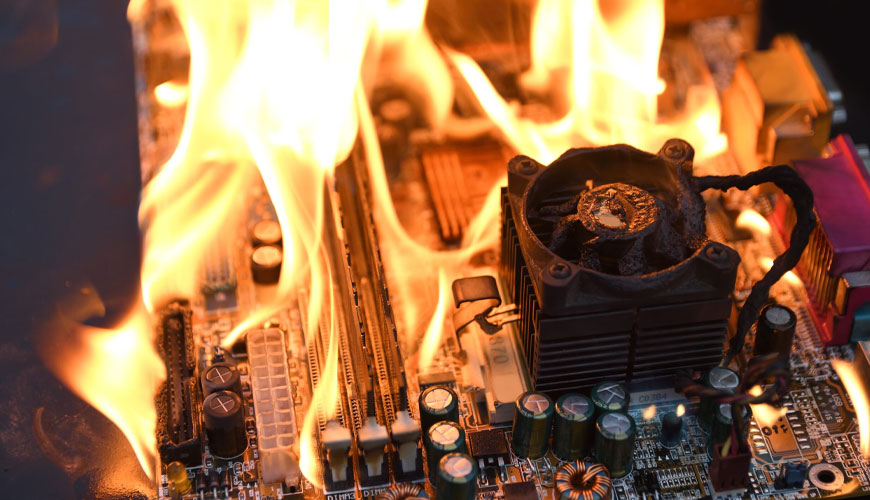

EUROLAB, with its state-of-the-art accredited laboratories and expert team, provides precise and fast testing services within the scope of IEC EN 60695-9-1 test. IEC EN 60695-9-1 provides guidance for evaluating the surface propagation of flame for electrotechnical products and the materials from which they are composed. It provides a description of the principles of flame propagation for both liquids and solids, guidelines for the selection of test methods, guidance on the use and interpretation of test results, and informative references.

One of the responsibilities of a technical committee is to leverage key security publications in the preparation of their publications, where applicable. The requirements, test methods or test conditions of this essential safety publication will not apply unless specifically referred to or included in the relevant publications.
Fires are responsible for creating hazards to life and property as a result of heat generation (thermal hazard) as well as toxic waste, corrosive waste and smoke (non-thermal hazard). The fire hazard increases with the combustion area, which in some cases leads to a flare and a fully developed fire. This is a typical fire scenario in buildings.
The superficial spread of the flame outside the ignition area occurs as a result of the formation of a pyrolysis front on the material surface in front of the flame front caused by the heating of the flame and external heat sources. The pyrolysis front is the boundary between the pyrolyzed material on the surface of the material and the non-pyrolyzed material. Combustible vapors are produced in the region of pyrolyzed material that mixes with air and ignites to form the flame front.
The surface spread of the flame velocity is the distance traveled by the flame front divided by the time required to travel that distance. The surface spread of the flame velocity depends on the heat supplied from the outside or the flame of the burning material in front of the combustion zone and the ease of ignition. Ignition ease is a function of the material's minimum ignition temperature, thickness, density, specific heat, and thermal conductivity.
EUROLAB assists manufacturers with IEC EN 60695-9-1 test compliance. Our test experts, with their professional working mission and principles, provide you, our manufacturers and suppliers, the best service and controlled testing process in our laboratories. Thanks to these services, businesses receive more effective, high-performance and quality testing services and provide safe, fast and uninterrupted service to their customers.
To get an appointment, to get more detailed information or to request an evaluation, you can ask us to fill in our form and reach you.